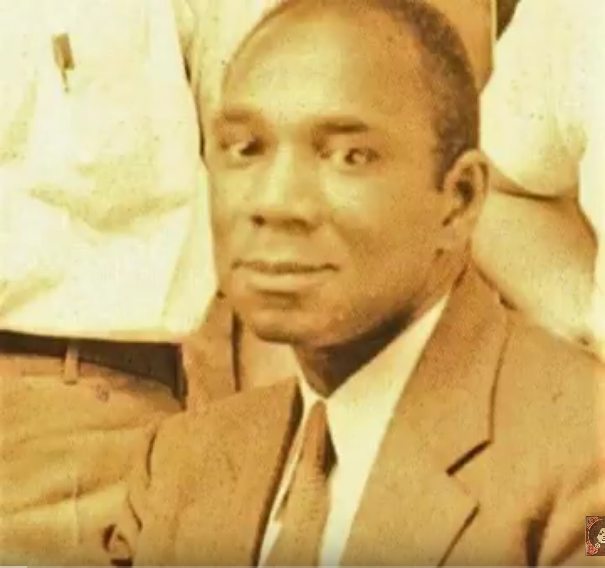
While little known today, during the late 1920s and the 1930s, B.D. Amis was one of a small cadre of African Americans leading the fight for workers’ rights and racial justice. Urbane in demeanor and a dynamic speaker, he was one of the most important Black activists of his time. His commitment was to the working class and, in particular, the Black working class.
Amis was born in Chicago in 1896. In his youth he was influenced by the anti-lynching writings of pioneering journalist and civil rights crusader Ida B. Wells-Barnett, who became his mentor while he was still in high school.
Amis became politically active in the early 1920s and by 1928 was president of the NAACP branch in Peoria, Ill. He addressed many civic and church groups about the activities and goals of the NAACP and gave speeches in defense of the rights of his people. A May 1928 article in The Peoria Journal described him as a man who “has a pleasing personality and made a deep impression upon his hearers this morning.”
After discussions at the 1928 congress of the Communist International, the Communist Party USA had pledged to take up the “Negro Question.” The CPUSA leadership invited Amis to come to New York after seeing his effectiveness as a local activist. The party’s determination to address the issue of Black rights was extraordinary because almost no other non-Black organization was willing to address this issue in the 1920s and 1930s.
Amis was also one of the first native born and working-class Black leaders of the party. Other early Black Communist leaders, such as Cyril Briggs and Otto Huiswoud, had been born in the Caribbean and had college educations.
Communism’s appeal to Blacks
It is not surprising that the Communist platform was attractive to African Americans in the 1920s and the 1930s. The Black community still strongly felt the legacy of slavery and the betrayal of Reconstruction. There were also thousands of Black soldiers who had fought for democracy in World War I, only to return home to an America rife with Jim Crow laws, segregation, discrimination, lynching, and near-peonage for many southern Black farmers.
Black workers were generally excluded from labor unions. With the onset of the Great Depression in 1929, Black workers, who already were suffering economically, lost jobs by the tens of thousands. Three to four times as many Blacks as whites ended up on the relief rolls in urban areas. The Communist Party, by virtue of its openness to Blacks and willingness to take up the Negro Question, became the choice for Amis and other prominent Blacks of the era.
The NAACP and Marcus Garvey’s Universal Negro Improvement Association, also known as the Back to Africa movement, were other organizations vying to represent the interests and needs of the Black population at that time.
W.E.B. Du Bois, the editor of the NAACP magazine The Crisis, had proposed his idea of educating the best and most capable Blacks, a “Talented Tenth.” Garvey was interested in racial uplift through Black economic and political independence. The party, however, offered a political arena and an activist agenda to deal with the Negro Question that these organizations eschewed.
Writer, speaker, mass leader

As a member of the National Committee of the American Negro Labor Congress (ANLC), Amis plunged wholeheartedly into CPUSA activities and quickly became one of its most visible members. He recruited, organized rallies, spoke at conferences, and wrote articles for the Daily Worker, the CPUSA’s newspaper and predecessor of the People’s Weekly World.
Articles such as “ANLC as Mass Organization of Negro Workers,” “Vote Communist – Negro Workers,” “Fight Against White Chauvinism,” “Negro Workers Are Hard Hit by Unemployment; Must Organize,” and others are indicative of the issues that concerned not only him but also the party as a whole.
In 1930, Amis became the general secretary of the newly formed League of Struggle for Negro Rights (LSNR) and an editor of its publication, The Liberator. The role of the LSNR was to publicize the issues of the day, especially lynching, through rallies, conferences and picketing. The well-known Black poet Langston Hughes was the group’s honorary president.
Among its other activities, in 1933 the LSNR drafted a “Bill of Rights for the Negro People,” which was carried to Washington by 3,500 demonstrators demanding that the Franklin D. Roosevelt administration enforce the Constitution and give Black Americans their rights.
Aside from his engagement with many movements for social justice and equality, Amis was involved in three of the most celebrated political frame-up cases of his time: the Scottsboro case, the Angelo Herndon case, and the case of Tom Mooney.
The Scottsboro 9
In 1931, just after he had written the pamphlet “Lynch Justice at Work,” came the event that was to epitomize lynch justice and symbolize the oppression of Black Americans: the Scottsboro case. Nine Black youths riding on a freight train were falsely accused of raping two white women.
Today it is hard to imagine the resonance that the case had in the 1930s. It pitted Southern lynch justice against the legal challenge to racism and discrimination, the more conservative NAACP leadership against the more militant Communist Party, and the power of direct action against the passiveness of the legal process.
The party immediately recognized the significance of what was happening and acted swiftly to organize the defense for the nine accused youths through the International Labor Defense (ILD). Amis contributed to the defense effort as author of the pamphlet “They shall not die! The story of Scottsboro in pictures,” put out by the LSNR. The cry, “They shall not die!” spread not only throughout the United States, but across Europe as well.
The strategic decision to organize mass demonstrations, to issue posters, and to write articles brought national and international publicity that ultimately saved the lives of the accused.
Amis was deeply involved in all of this, including traveling to Alabama. The virulent racism spurred a clamoring for the deaths of the accused in spite of the overwhelming proof of their innocence. The party took an open and committed stand against racism and injustice, thereby enhancing its standing in the Black community.
The success of the activist tactics of the Scottsboro case would eventually lead to A. Philip Randolph’s proposed March on Washington in 1941, the Montgomery bus boycott, the 1963 March on Washington, and the civil rights movement. The LSNR and the ILD demonstrated that picket lines, pamphlets, posters, magazine and newspaper articles and anti-lynching rallies could be effective tactics in the fight for workers’ rights and justice for African Americans.
Herndon and Mooney
The very next year, 1932, 20-year-old Angelo Herndon, a member of the Young Communist League, was arrested in Atlanta and later sentenced to 18-20 years on a Georgia chain gang for attempting to “incite insurrection” based on his possession of Communist literature. Soon the ILD was leading a nationwide campaign for his freedom.
Herndon wrote in his autobiography, “Let Me Live,” that at the first All-Southern Conference for the Scottsboro Defense in Chattanooga, May 31, 1931, “Perhaps the most eloquent address of the meeting was made by B.D. Amis. … He brought both whites and Negroes to their feet cheering loudly. … So great was the enthusiasm and militancy of the audience that the cops looked scared.”
The third highly visible case that Amis had a connection to was that of the militant labor leader Tom Mooney, who had been convicted of a bombing in San Francisco. Mooney was sentenced to death, later reduced to life, even though the evidence against him was shown to have been faked and several witnesses’ testimony was proven false. Amis read a statement written by Tom Mooney’s aged mother Mary to crowd of 12,000 at the Bronx Coliseum in February 1932.
Further recognition of the stature that Amis had during this period is Nancy Cunard’s inclusion of his essay, “The Negro National Oppression and Social Antagonisms,” in her seminal anthology, “Negro.” The list of contributors to this now classic work looks like a Who’s Who of the 1920s and 1930s. Amis was right there among them.
Party and union leader
Amis went on to become the district organizer for the Communist Party in Cleveland for a couple of years and traveled to the Soviet Union on two occasions. The second trip lasted about a year-and-a-half. While there, he took courses in Marxism, traveled with other Americans, such as Paul Robeson, and wrote articles for the Negro Worker, the newspaper of the International Trade Union Committee of Negro Workers.
Upon his return to the United States, Amis settled in Philadelphia and joined the Steel Workers Organizing Committee (SWOC) as a field organizer. He also was the head of the Philadelphia committee of the National Negro Congress, an organization established in 1936 to “secure the right of the Negro people to be free from Jim Crowism, segregation, discrimination, lynching, and mob violence” and “to promote the spirit of unity and cooperation between Negro and white people.”
Amis was also the chairman of the Philadelphia Committee for the Defense of Ethiopia and member of another committee to raise funds for the defense of the Republican (anti-fascist) government of Spain. As if these activities were not enough, Amis also ran as the Communist candidate for auditor general of Pennsylvania in 1936 and made an “Appeal to the Colored Voters to Vote Communist” on a local radio station.
By the late 1930s Amis had begun to shift from political activism to union organizing. He was having success with the SWOC and in two years had organized 15 groups of steelworkers into unions or lodges, negotiated union contracts, had acted as spokesman in labor board cases.
Among the companies organized were Lukens Steel, Allenwood Steel and the Pacific Steel Boiler Company. An article in the October 16, 1938, Philadelphia Independent said, “The labor press hailed his victory in organizing the J.E. Lovergan Company of Philadelphia, pointing out that for 100 years this had been a nonunion concern.”
His success with the steel workers led the local joint board of the Hotel, Restaurant and Service Employees International Alliance and the Bartenders International League to ask him to organize the Black service workers in Philadelphia, who were subject to “unequaled exploitation,” in the words of a trade unionist of that time.
Once again it didn’t take long for Amis to have success. He organized Local 758 of the Colored Catering Industry Workers, and soon local newspapers were reporting that for its members in Philadelphia, “Wage increases have become effective for all cooks and kitchen employees, porters, etc., at leading caterers.” He also won jobs for them at the new Cotton Club restaurant.
Unfortunately, Amis’ success with Black workers brought resentment from white unions, who called upon the international union, headquartered in Detroit, to dismiss Amis and to have Local 758’s business transacted through the local white union. This move demonstrated how embedded racism was in the AFL. This changeover in power eventually nullified many of the gains that Amis had won.
A unique vision
Amis’ career represents a remarkable record of unrecognized achievement during an incredibly racist and anti-union period. The Communist Party made much of this possible through entities that led the fight for racial justice and workers’ rights such as its Negro commission, the American Negro Labor Congress, the International Labor Defense, the Trade Union Unity League, the League of Struggle for Negro Rights and the National Negro Congress.
Perhaps if more people knew the stories of how ordinary individuals such as Amis (or Ned Cobb or Fannie Lou Hamer) rose to extraordinary achievement, they would be encouraged to take on the questionable activities of many of today’s governmental and corporate leaders.












Comments